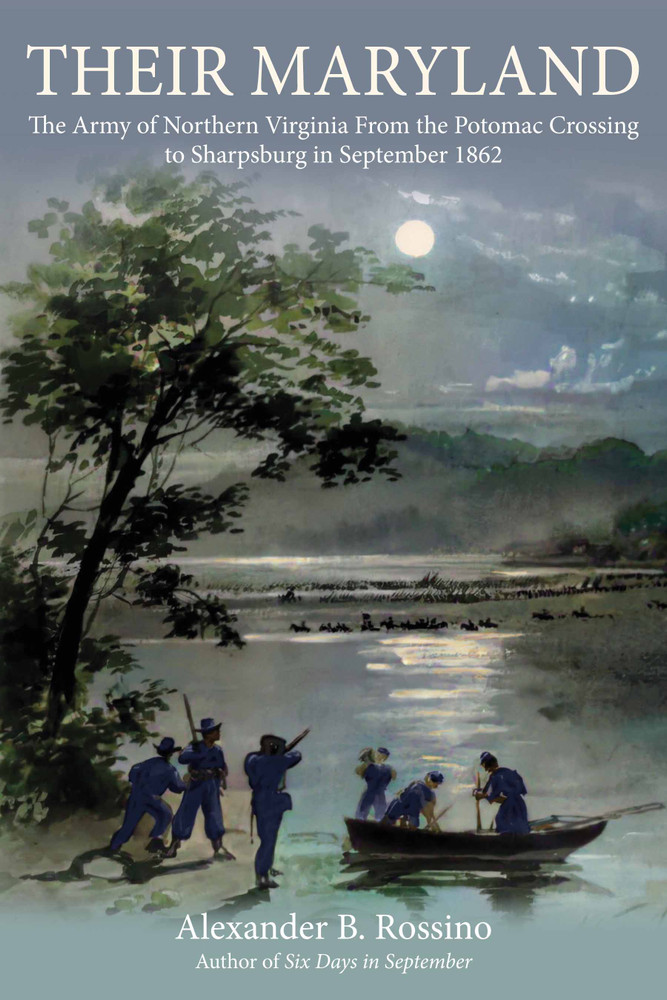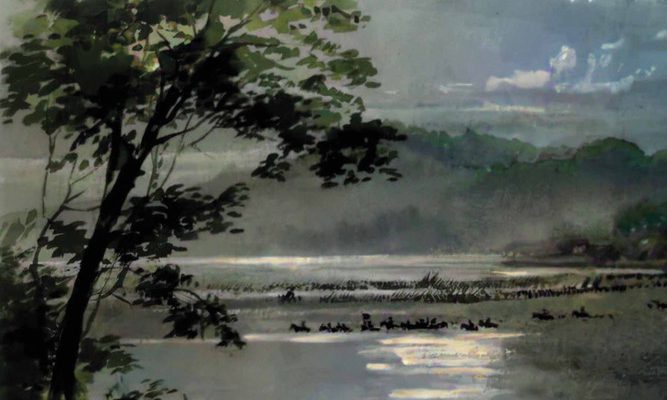Alexander B. Rossino


(The following is reprinted from Their Maryland: The Army of Northern Virginia From the Potomac Crossing to Sharpsburg in September 1862, the latest book by Alexander Rossino, who spoke on this topic at our April 16 lecture, which you can view here. What follows is an appendix to that work, which Mr. Rossino and the publisher have generously granted us permission to reprint.)
The story of Maj. Gen. Thomas J. ‘Stonewall’ Jackson’s victory at Harpers Ferry on September 15, 1862, is well-known to Civil War enthusiasts. Capturing more than 12,500 Federal troops at a cost of just over 300 killed and wounded, Jackson achieved a major Confederate triumph shortly before the larger clash at Sharpsburg/Antietam erupted late on September 16. Less well-known is the fact that Jackson’s men also seized thousands of refugee slaves and freemen who had taken shelter with Col. Dixon Miles’s command at Harpers Ferry.
No official Confederate report on the Harpers Ferry operation made mention of these prisoners, which Northerners and Southerners alike called “Contrabands” due to their legal status as property. Fortunately for posterity, the Richmond Dispatch covered their capture and transportation to the Confederate capital in some detail, mentioning the prisoners for the first time in an article that appeared on September 18, 1862. Stating “The whole garrison … surrendered on Sunday morning,” the Dispatch noted how “our forces captured about one thousand negroes.” Seven additional reports then appeared in the Dispatch and the Richmond Enquirer over the next five days outlining the story of what happened to these unfortunate human spoils of war after they fell into Rebel hands.[i]
Following the Federal garrison’s surrender, Jackson assigned Maj. Gen. Ambrose Powell Hill to parole enemy soldiers and collect captured property for transportation to the rear.[ii] Hill commenced these tasks on September 15, and by September 16 thousands of Union prisoners began the long march from Harpers Ferry to Frederick, Maryland, and points beyond. At the same time, some of Hill’s men scoured the town for all the black folks they could find, rounding them up for transfer south. A witness to these events named Abba Goddard described them in her journal, writing, “Every nook, cranny, barn, and stye has been searched and men, women, and little children in droves have been carried off … our hospital laundresses, and our men servants, without a word of warning, were seized upon” and taken.[iii]
An unidentified Rebel major even tried to seize the black men employed by Federal regiments, rather than let them go with the column of parolees heading to Frederick. This attempt to separate the blacks led to a confrontation between the major and Col. William H. Trimble of the 60th Ohio. Trimble had secured a pass for the black non-combatants in his regiment, but when they tried to leave town the Confederate major attempted to separate them from the column anyway. Trimble pulled his sidearm in response and compelled the Rebel officer to step aside at gunpoint, saving the black personnel from being seized.[iv]
By September 20, according to the Richmond Dispatch, the number of contrabands Hill collected had ballooned to as many as 2,500 people, many of whom were marched to Winchester, Virginia, along with the guns, ammunition, and other materiel captured at Harpers Ferry. Additional details began to appear in the Dispatch by September 22, which reported that “a large number of contrabands … had taken refuge with the Yankee thieves … [including] negroes [that] belonged to citizens of Jefferson and adjoining counties. A letter before us states that one gentleman from Clarke [County], who had lost 31 negroes, found 28 of them in this lot.” Subsequent reports on September 23 and 24 also noted that the Contrabands were captured “slaves” and “negroes, whom the Yankees had stolen.”[v]
According to one report that appeared in Southern newspapers, some of these individuals returned to their masters. “I met to-day hundreds of negroes taken at Harper’s Ferry going home with their owners,” wrote the report’s author from Winchester, Virginia, under the pseudonym ACCOMAC. “Most of them seemed in fine spirits, singing ‘Carry me back to Old Virginia,’ & c.” Major Andrew Wardlaw of the 14th South Carolina had a similar personal experience while enjoying the hospitality of the local Bell family, who “were delighted to see the Southern Army [and] had fifteen negroes at Harpers Ferry.” No fewer than “1200 negroes were captured & restored to their owners,” confided Wardlaw to his diary, including the helpful “Mrs. Bell [who] got 10 of hers.”[vi]
Still other Contrabands ended up being confiscated by the Confederate army rather than returned to their owners. According to the Richmond Dispatch on September 24, this occurred due to the fact that their “masters propose to offer them for sale in Richmond, not deeming them desirable servants after having associated with the Yankees.”[vii] Finally, on that same day, the Dispatch noted how “Two car loads of negroes arrived in this city yesterday by the Central Railroad.” The men responsible for completing this task belonged to the brigade of Col. Edward L. Thomas, according to A. P. Hill’s campaign report. Noting that he “remained at Harper’s Ferry until the morning of the 17th … at 6.30 a.m., I received an order from General Lee to move to Sharpsburg. Leaving Thomas, with his brigade, to complete the removal of the captured property, my division was put in motion at 7.30 a.m.”[viii] A wealthy planter before the war, Thomas commanded four regiments of troops from Georgia, including the 14th, 35th, 45th, and 49th Infantry, so it was likely these men who oversaw the transfer of the contrabands from Harpers Ferry to Richmond.
There is evidence that others in the Army of Northern Virginia knew about these events at Harpers Ferry. For instance, a letter written by Col. Francis H. Smith of the 9th Virginia to Governor John Letcher of Virginia on September 16 also appeared in the Dispatch on September 20. Writing that the Federal garrison at Harpers Ferry had surrendered unconditionally, including “10,000 men, with all the arms, fifty pieces of artillery, ammunition, 100 wagons, quartermaster and commissary stores, and many cars, some of which were loaded,” Smith counted “600 negroes” among those seized.
Smith’s regiment belonged to the brigade of Lewis Armistead in Richard Heron Anderson’s division of Longstreet’s command.[ix] As such, the 9th Virginia passed through Harpers Ferry on the way to Sharpsburg. It did not participate in the processing and removal of prisoners and materiel after the Federal garrison’s surrender. Thus, Smith either saw for himself, or received word from others, that a significant number of blacks had been captured. A commissary sergeant with the 13th Georgia, part of Alexander Lawton’s brigade in Jackson’s command, also wrote home about the event, informing his financé that after Jackson had compelled the Federals “to surrender on the 15th September … We took 11.700 prisoners & small arms, 76 cannons, 3000 ‘contrabands’ and many stores of all kinds.”[x]
Word also traveled through the civilian populace, as noted by Joseph Addison Waddell, a former newspaper editor and wartime clerk in the army quartermaster’s office in Staunton, Virginia. Recording in his diary that “Maj Yost has just arrived from Harper’s Ferry,” Waddell confirmed “that … Gen. Jackson … had captured at Harper’s Ferry 11,000 prisoners and 1500 negroes, 50 pieces of artillery, all their ammunition, commissary and Quartermaster’s stores.”[xi]
Similarly, a brief mention of “1000 negroes” captured at Harpers Ferry made it into the local newspaper of Camden, South Carolina, in late September 1862, proving that some in the Deep South also heard about the event.[xii]The matter-of-fact language used in the article suggests, however, that it raised no special interest at the time.
This remarkable incident demonstrates how at the same time they were fighting a war for Southern independence, Robert E. Lee’s men also enforced standing state property laws concerning captured Contrabands. The removal and sale of the Harpers Ferry captives would foreshadow events to come when during the Gettysburg Campaign Maj. Gen. Richard Ewell’s Second Corps seized and shipped south black men, women, and children in Pennsylvania without regard for their legal status.
without regard for their legal status.[xiii]
[i]Richmond Dispatch, Sept. 18, 20, 22, 23, and 24, 1862. Also see two reports in the Richmond Enquirer, Sept. 23, 1862.
[ii]OR 19, 1: 981.
[iii]Dennis E. Frye, Harpers Ferry Under Fire: A Border Town in the American Civil War (Virginia Beach, VA, 2012), 102.
[iv]Hartwig, To Antietam Creek, 564-565.
[v]Richmond Enquirer, Sept. 23, 1862 and Richmond Dispatch, Sept. 24, 1862.
[vi]The Southern Banner, Oct. 1, 1862. Diary of Andrew B. Wardlaw, Sept. 14 and 15, 1862 in South Carolina Vertical File, Antietam National Battlefield Library. My thanks to Steven Stotelmyer for the source.
[vii]Richmond Dispatch, Sept. 24, 1862.
[viii]OR 19, 1: 981.
[ix]Harsh, Sounding the Shallows, 42.
[x]Wells Letter, Oct. 2, 1862.
[xi]Diary of Joseph Addison Waddell, Sept. 17, 1862. Augusta County, Virginia Collection, Center for Digital History, University of Virginia, Charlottesville, VA. Available online at https://valley.lib.virginia.edu/papers/AD1500.
[xii]Camden Confederate, Sept. 26, 1862.
[xiii]Robert J. Wynstra, At the Forefront of Lee’s Invasion: Retribution, Plunder, and Clashing Cultures on Richard S. Ewell’s Road to Gettysburg(Kent, OH, 2018).

